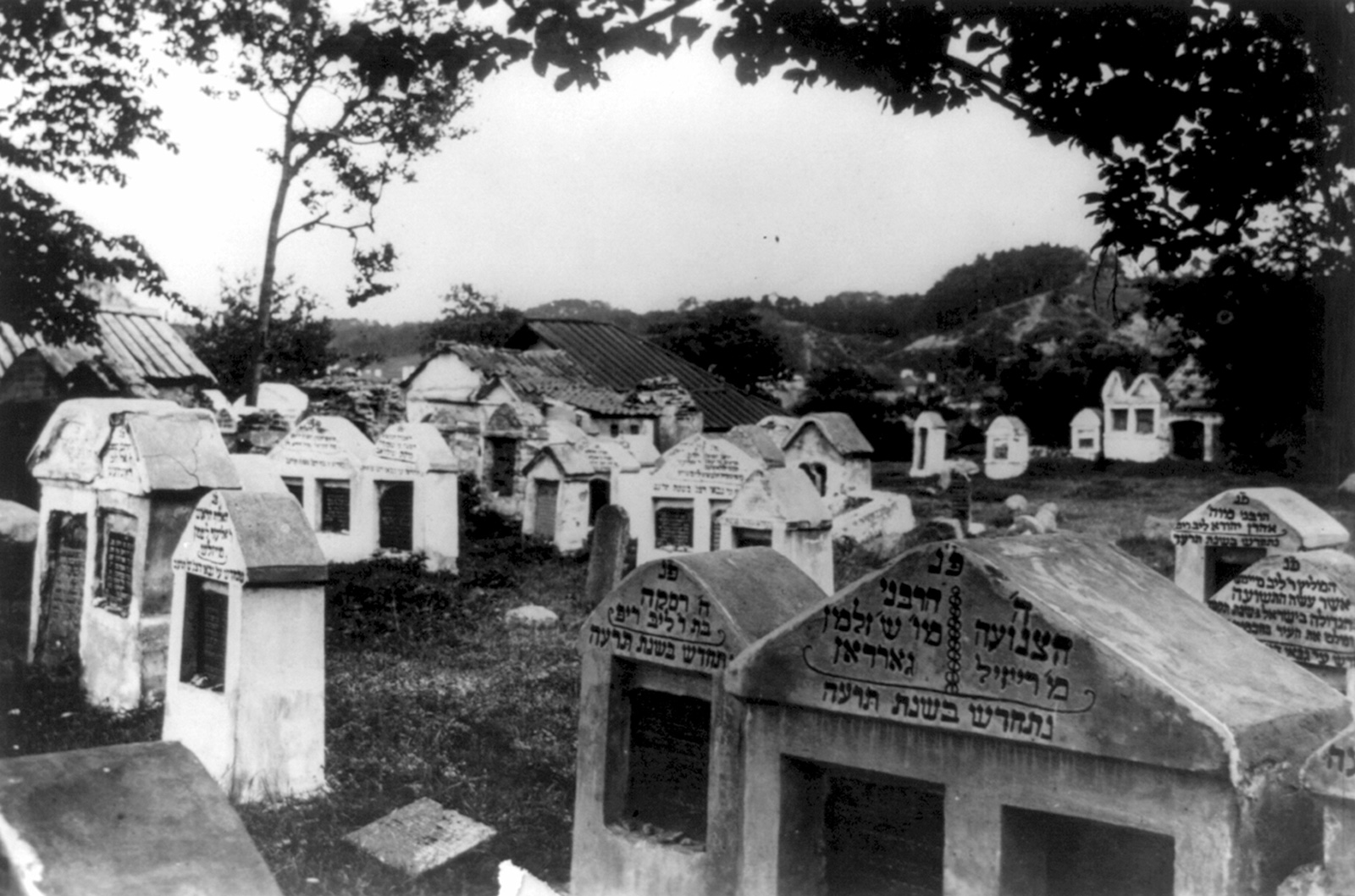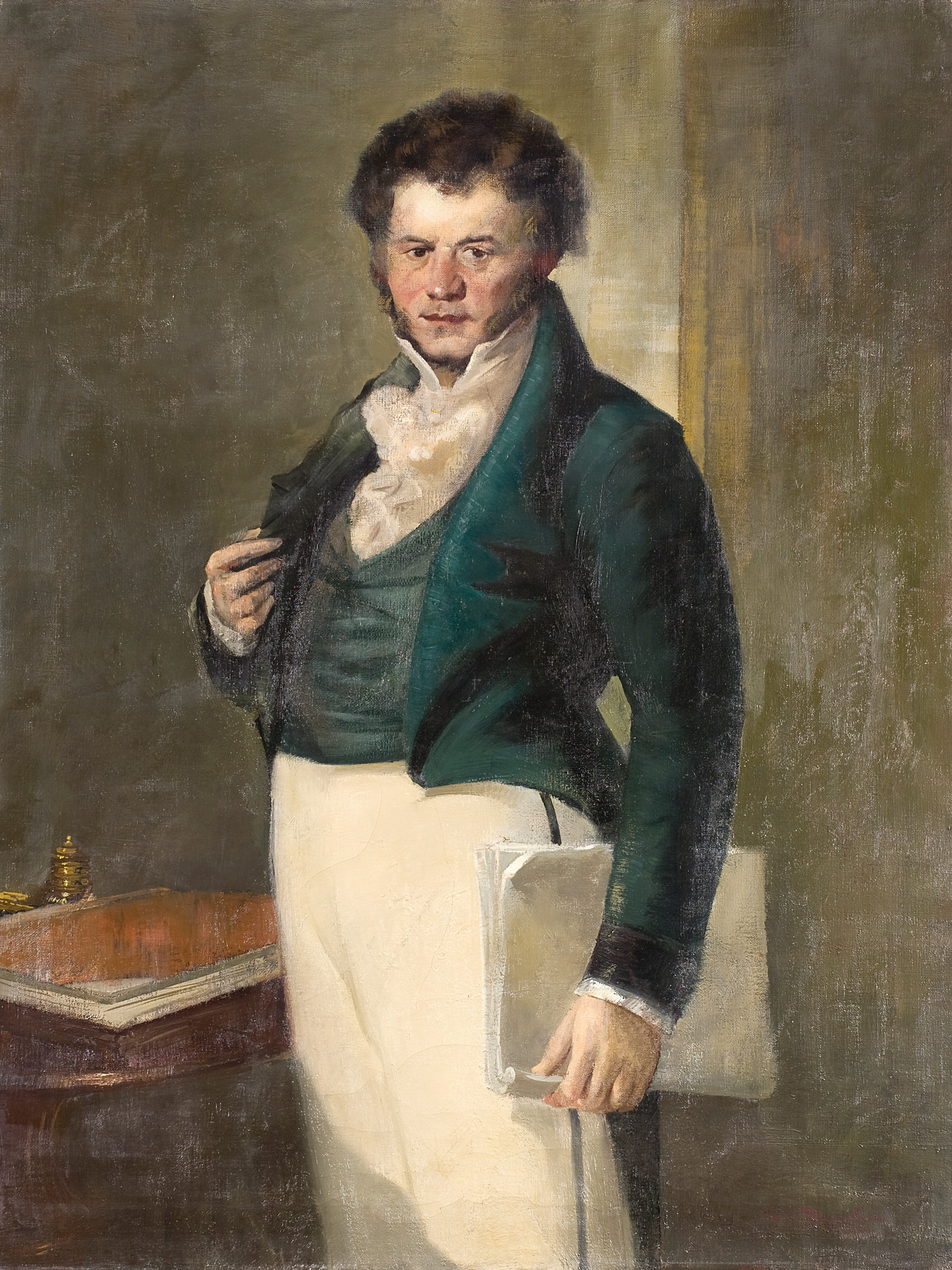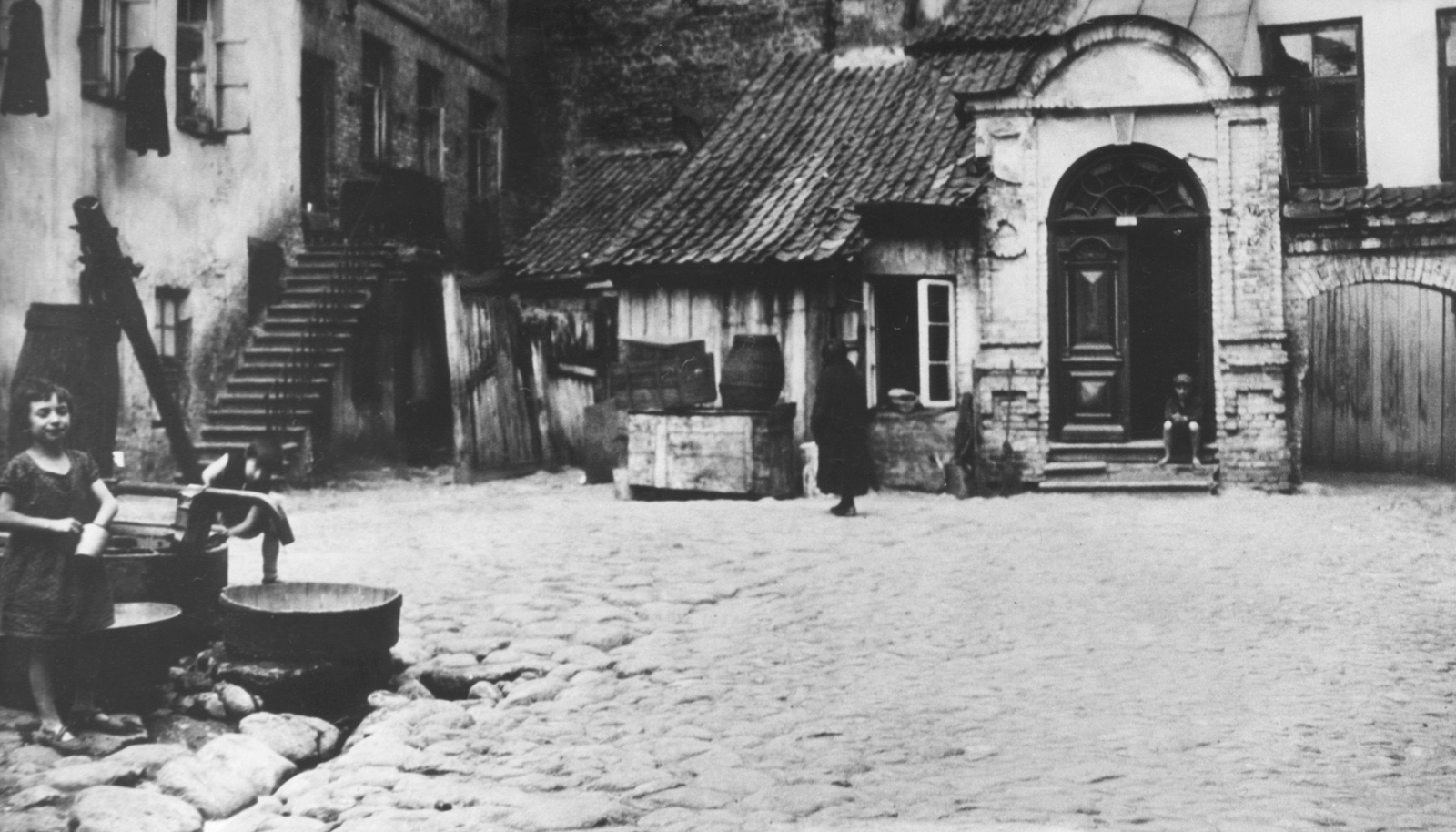“But it’s so beautiful,” people always say to me about Vilnius when I tell them about a dreadful moment I had in that city some fifteen years ago. It was a period in which I was traveling a great deal throughout Central and Eastern Europe—Poland, Lithuania, Latvia, Ukraine, Belarus—researching a book that had to do with the Holocaust. My visits to local and regional archives, my tours of mass graves and abandoned shtetls would, I hoped, shed light on the lives and fates of certain relatives of mine: my mother’s uncle and aunt and cousins, Jews living in eastern Poland who had perished during the war.
You see a great many awful things when you make this kind of journey; indeed, one strange danger of traveling as I traveled is that you can become inured to the horrors of which the plaques and monuments, the roofless synagogues, and the strange patches of discolored earth you occasionally see in isolated meadows are now the only physical traces. I saw all those things, and thought I’d gotten used to it until my moment in Vilnius, which for some reason was the worst: the moment when, finally, I thought I couldn’t go on, couldn’t look at one more “hideous spectacle of pitilessness and horrible suffering,” as the French writer Stendhal once called it, reminiscing about a bad moment of his own in Lithuania, two centuries before mine. During his visit, there was a small, unexpected moment of grace, too—something else, as it happened, that I owe to Stendhal.
Vilnius is beautiful. If, as I did in the summer of 2003, you drive north from Ukraine into Lithuania en route to Vilna, which is what we still call it in my family, it’s like coming home to Europe. The strange, vaguely Oriental tang, bitter as the skin of an orange, which you can never quite shake in Ukraine even if you’re traveling in the western, “Polish” part—the houri curve of an onion dome on a church, the high Tatar cheekbone or slant of the eye in the blond boy or girl who waits on you at a restaurant where a portrait of Franz Josef hangs on a wall—all that strangeness gradually disappears as you cross the border into Lithuania. Far behind you is L’viv, the capital of Western Ukraine, a city renowned for its churches, only a few of which are familiar to American eyes: Roman Catholic, to be sure, but also Russian Orthodox, Greek Catholic, Greek Orthodox, Uniate, Armenian Catholic and Armenian Orthodox, they are all here. This, after all, is L’viv, once Lwów, once Lemberg: a former Habsburg city, the capital of a province of a multinational empire, its places of worship, if not its population, still multicultural after all these decades.
But Vilna is clearly, triumphantly Catholic: an exuberant, pastel-colored Counter-Reformation city whose churches, smooth and lustrous as the shell of an egg, come in the colors of Ladurée macarons: violet, peach, canary yellow, an aloof rose pink, the improbably sexy pistachio green. That pink; that green. What a lovely culture, I thought when I first arrived there, that June. How appealing the civilization that paints its houses and churches the colors of candy.
Strictly speaking, there was no reason for me to be in Vilna. Our people were Galizianers, Jews who inhabited what is now southeastern Poland and western Ukraine. No one in my family had ever lived in this northern, Litvak city, a Jewish metropolis so renowned in its time that Jews of my grandfather’s generation called it “the Jerusalem of the North”: so great was the fame of its rabbis, so immense the learning of its scholars, so numerous its synagogues and houses of study—the erudition and the buildings both being the hallmark of a civilization at its acme. But for me there was no family connection to this distinguished place. I went mostly because the close friends who were accompanying me on my travels were eager to see it: Froma was the granddaughter of two Vilna rabbis, and was curious to see both the city and the little town nearby where they had been born. Why not?, I joked as we maneuvered our rented car along the highway north, we’re in the neighborhood.
Perhaps it was this very detachment from the place and its history that made me able to see its story so clearly. This kind of emotional distance is something Stendhal admired. In his works he refers to it by its Italian name, disinvoltura—“not being involved.” In a passage in Rome, Naples, and Florence, for instance, Stendhal allows himself to savor the Romans’ deployment of disinvoltura in their social lives; in so doing, he suggests that it is a quality as useful to writers as it is to young aristocrats. A small degree of disinvoltura, a slight sense of relief at being in a place that had nothing to do with the story I was trying to unravel, enabled me, paradoxically, to abandon the intensely narrow focus of my own search and to feel, once more—as most people do when they think of what happened in the East between 1941 and 1944—the abstract, sheer size of it, the pitilessness and horrible suffering. In Vilna, after three years of traveling in search of my family’s story, three years of interviewing people about the worst imaginable things, I couldn’t take it any more.
Advertisement
Two things broke me.
First, there were the forests of Ponar. Ponari, some people call it. Here, before the war began, the government had been digging a series of vast pits in which to store natural gas. To this use they had never been put; instead, a hundred thousand dead Jews went into them. The pits, with their unnatural contents, are still there. Before the war, a tour guide we later met told us, people used to picnic in those fields. Now the people are under the fields.
We visited Ponar. Each pit now has its own monument: a stone, an inscription, a plaque. After two pits I said, I can’t do this any more, it’s enough. While Froma and her husband, George, wandered deeper into the maze of pits with their steles and their plaques, I sat at the base of a monument close to the entrance of the whole site, refusing even to follow them with my eyes. After half an hour, they returned. I said Kaddish, George said. Then we drove back to our hotel.
That was the first time, during my months of travels, that I had balked.
And then, back inside the city, that beautiful city with its Ladurée colors, there was the second thing: our visit, one afternoon before we left, to the Museum of Jewish Culture. Or, as I later came to think of it, the Non-Museum of Jewish Culture. For, as we found out when we went inside the shabby little building, this museum of the Jerusalem of the North had almost nothing to display: no proof that here, once, there had been a civilization worth preserving. On the shelves, there were a few Soviet-era trinkets: ceramic menorahs, that kind of thing. On the walls were some blurry photographs. That was it. It occurred to me that this devastating absence spoke more eloquently than a hundred exhibitions at a dozen Shoah museums could have done. We practically ran out of the building.
That was the second thing. As we returned to the hotel, I said to myself: I’ve had enough. I was finished.
*
Stendhal didn’t like Vilna, either.
In Book Five of his History of Painting in Italy, the author describes Vilna as the site of his own personal trauma, a bad moment that had occurred on June 6, 1812, as he stood, he says, on the banks of the Neman, watching the Grande Armée pass into Russia. This was at the triumphant beginning of Napoleon’s Russian campaign, when there was no reason yet for despair. And yet, he wrote in this book—the manuscript of which, as it happens, he gathered together for the first time while he was in Lithuania, having brought it from Paris and worked on it steadily all the time he was serving in the Armée—he felt a certain sadness pass over him as he watched this innumerable army cross the river, one composed of so many peoples, and which was to suffer the most memorable defeat history can tell of. The glum future that I perceived in the depths of Russia’s endless plains, together with our general’s erratic genius, filled me with doubt. Wearied by these pointless conjectures, I turned my mind to positive thoughts, that faithful stay in all manner of fortune.
And so, as Stendhal often did when confronted by deep emotion, he abstracted himself from feeling into reflection. He thought, he tells us, about a certain book about the temperaments by the natural philosopher Cabanis; and he decided, that bright June day in 1812, to think about the sanguine temperament, which he thought he could detect in the faces of the soldiers. “I sought out examples in the faces of the many soldiers who passed by me, singing and, occasionally, stopping for a moment when the bridge became too crowded.” And what did he think he saw in those faces? “A brilliantly colored head,” “an expression of gaiety,” “a quite energetic heart”: in sum, “great-heartedness.”
Advertisement
In other words (he implies), a French heart.
Which is to say that, at the very moment when he crossed the border into Asia, the moment when he had his presentiment of the devastation that this unknown and unknowable land, with the strange houri curves of the onion domes on its churches, the high cheekbones and the slant of the eyes in the faces of the massed tribesmen who awaited him, he managed to find a bit of home. Brilliance, gaiety, energy.
I like the way Stendhal saves himself here: cools himself off, cocks an eyebrow at the passions (even his own; even as he secretly continues to harbor them), substitutes a book for an irrational presentiment. I love him for this, in a way I don’t love any other author of the nineteenth century.
Born in the last years of the 1700s, Stendhal seems always to be torn between an eighteenth-century predilection for rationality and a nineteenth-century Romantic feeling—a struggle in which the former often prevails. (See, for instance, how he finds more to admire in the wearily wise, middle-aged diplomat Count Mosca, my favorite character in The Charterhouse of Parma, than he does in Fabrice del Dongo, the novel’s dashing, clueless hero.) The ability to impose coolness on the passions is the quintessence of Stendhal—may, indeed, be the quintessence of civilized behavior—and I find it interesting that he managed to do it on that sunny summer day in Vilna, before there was, really, any horror to contain. That, of course, would come later, five months and as many as a hundred thousand dead men later.
The memory of the Russian disaster furnishes another Stendhalian moment in which we find Vilna, horror, and beauty intertwined. There is a passage in Rome, Naples, and Florence in which the Frenchman, finding himself in Milan on a November day in 1817 (and attending that evening a performance at La Scala), describes what he refers to as one of the most beautiful sights he’s ever enjoyed: the Alps, as seen from the bastion of Milan’s Porta Nova. This moment of beauty leads him to a small excursus on the aesthetic merits of various mountain ranges. Stendhal writes that he finds the Italian view of the mountains—that is, the view from a distance—“as reassuring as Greek architecture”; but as seen in Switzerland, capped by snow, the same peaks inevitably put him in mind of “the failings of mankind.”
Why should this be? Because he cannot bear the sight of snow. Why can he not? Because it reminds him of Vilna, of the freezing winter of 1812:
After the Russian campaign I couldn’t bear snow—not because of my own perils but because of the spectacle [it presented] of pitilessness and horrible suffering. In Vilna they would fill the gaps in the hospital walls with bits of frozen corpses. With such memories, how could one find pleasure in looking at snow?
Stendhal, as is widely known, is less than reliable in his memoirs. We know, for instance, that he cannot have witnessed the Grande Armée crossing the Neman in June of 1812, since he wasn’t there; and we know that if he saw this happen at all, which it’s possible he never did, it would have been in August of that year. I mention this penchant for invented enhancement because of a detail found on this same page of the text of Rome, Naples, and Florence, something that may be a lie or may be the truth—or, like a novel, may be a lie that tells the truth.
In this passage, the chilling description of that unforgettable horror—the use of bodies as bricks, an item in the imaginative inventory of the West that would not recur for another century and a half, when images of stiffened bodies stacked like logs or stones became commonplace—the chilling description segues with seeming incongruity into an account of the writer’s arrival, on the evening of the day on which he recalled that gruesome wartime vision, at La Scala. There he attends Maometto, an opera by a German composer, quite popular in his day and now largely forgotten. The composer’s name was Winter.
Was it really Winter’s opera being performed that night, the night of the memory of Vilna in the winter of 1812? I like to think so. Notice how the author (who knew English) goes out of his way, in this passage, to substitute one kind of cool—a redemptive musical beauty, authored by “Winter”—for the dreadful cold of Vilna, which forever after symbolized for him the horrors of war. Look again at the passage about mountain snows, and then push ahead a little bit:
With such memories, how could one find pleasure in looking at snow?
As I got out of the sedan chair, I went into the foyer of La Scala to hear the performance of Maometto, with music by Mr. Winter.
Has there ever been a more civilized paragraph break?
*
We left Vilna the day after the visit to Ponar, the day of the Jewish museum. To calm me down, my friends insisted that we take a stroll around the city before going to the airport. I had barely slept; had sent unhappy emails to my friends back in New York, saying I couldn’t go on; was planning to cut short the rest of this particular Eastern European trip. We had intended to go to Latvia the next day, where I was to meet a gentleman described to me as the last Jew in the town; his name, someone told me, was Mendelsohn. But I had had enough of meeting the last Jew in the towns through which I’d traveled, had had enough of Vilna, in particular, and everything it stood for.
So we walked glumly through the pastel city. Suddenly, Froma, who had walked a bit further up the street, and with whom I don’t believe I’ve ever discussed my tastes in French literature, exclaimed. I saw her peering intently at a plaque affixed to the wall of an elegant building. Then she turned to me and beckoned, as she so often did, to come, come. Thinking that she had, yet again, found some dire record of an unspeakable atrocity, I shook my head. But Froma called out again, and so, as I so often did, I relented. I approached the building and what I read was this:
IN THIS HOUSE
STENDHAL
THE FRENCH WRITER
(1783–1842)
STOPPED IN DECEMBER 1812
DURING THE PASSAGE
OF THE NAPOLEONIC ARMY
I burst into tears. The plaque is of stone, a pale berry color; the letters cut into it show as gray. It was summer, not winter, but I, too, had made my stop in Vilna. Later that day, we passed into Latvia.
Adapted from Ecstasy and Terror: From the Greeks to Game of Thrones, which will be published October 8 by New York Review Books.





